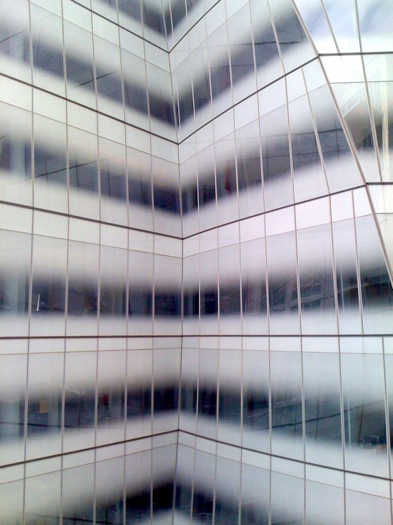
In a few short years, Nineteenth Street between Tenth and Eleventh avenues has become a block-long showroom for contemporary architecture in New York. The western end has its starchitectural Scylla and Charybdis in Frank Gehry's IAC building and Jean Nouvel's mosaic-windowed condo tower, 100 Eleventh. At the east end is DS+R's reconfigured High-Line, and now in mid-block, between the Gehry and a crisp modern block by Anabelle Selldorf, is Shigeru Ban's recently completed Shutter House condo.
Neil Denari's nearby HL23 has commanded a lot more ink than Ban's building—it hangs out over the High Line on Twenty-Third, begging for attention, and its protracted tale of construction, combined with Denari's slim portfolio and big LA reputation, have generated heat. Ban's building is better. Unlike HL23, which is merely a stack of floor plates, the Shutter Houses were conceived in section, each apartment being a complex set of duplex spaces running from front to rear. The building gets its name from the rolling metal shutters on its front facade, inspired by the industrial pull-down security gates familiar in the area, which shield ample terraces from the elements and prying eyes. Behind those screens, double-height windows create remarkably airy spaces with views looking across what's left of industrial Chelsea and out toward midtown.
I am admittedly not the world's number one fan of Japanese minimalist chic, and some of Ban's decisions here I found perplexing. The lobby—and this is a problem with many upscale modern condos—is utterly sterile and banal, and no place for a guest to wait. The cantilevered balconies at the rear of the building are actually set on a slight angle, for drainage, and the result is that they feel flimsy and vertiginous, as do some of the interior spaces. Most creepy are master bathrooms with floor-to-ceiling windows that afford those working at the extremely proximate IAC with a show.

The view from the bathroom.
It is, generally, hard for me to get excited about another new condo for the exorbitantly wealthy. Ban, however, is famously a good citizen, and this project hardly seems like a work of cynical profiteering or formalistic toying about. It would be nice if more buildings in this city, and not at just the very high-end, reflected so much creativity in the construction of spaces and in their reckoning with their urban heritage.
